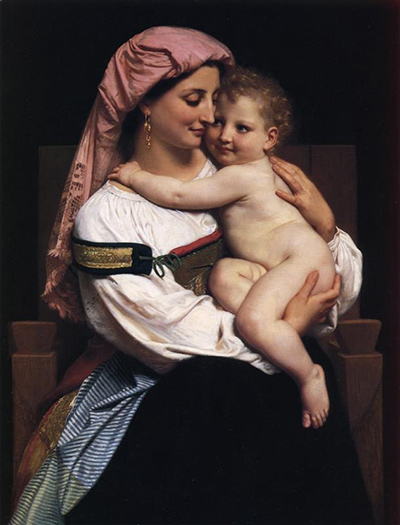On November 30, 1825, in La Rochelle France, the famous academic painter and traditionalist William-Adolphe Bouguereau was born. At the onset, it was assumed that he would join the family business of selling olive oil and wine, but that changed when his uncle Eugene, who was a curate, had other plans for him.
Eugene made arrangements for the painter to attend high school and also taught him biblical subjects and classical music. William-Adolphe Bouguereau had a great display of artistic talent at an early age, and that made a certain client to convince his father to send him to the Ecole des Beaux-Arts in Bordeaux.
At the time of his demise from a heart ailment in 1905, William-Adolphe Bouguereau had a successful painting career in the “Academic Style” as defined by various European art institutions. It is a style that preserves and represents a classical, representational mode of art that ranges from Neoclassicism to Neoromanticism. Some experts also refer or compare it to Historicism.
William-Adolphe Bouguereau enjoyed significant popularity in his native France and the United States, and this is evident in the numerous top prices and official honours. The whereabouts of many of his work are still not known, and it is believed that he created at least 822 pieces of finished paintings in his career. Some of the popular works by William-Adolphe Bouguereau include:
- Woman of Cervara and her Child
- Compassion
- The Bohemian
- Dante and Virgil
- At the Edge of the Brook
Around 1920, however, the artist changed taste and opposed the impressionists who were finally gaining acceptance. It is believed that these two aspects resulted in the falling into disrepute of William-Adolphe Bouguereau. After 1920, the artist’s fame had waned since his name never appeared anywhere, including encyclopedias.
The female form was the favorite subject of the artist as is evident in the numerous females who were featured in his work. He included nude females, Christian figures, pagan goddesses, and humble girls and women who were contemporary to his era. Some of the popular pieces include After the Bath, Les Deux Baigneuses, Soir, Evening or Evening Mood, L'Aurore or Dawn, Bacchante and Psyche.
Being an assiduous artist, William-Adolphe Bouguereau would rise at dawn and paint until nightfall; even during his twilight years. He described his love for painting when his death drew close in a statement that described how he had little patience for the arrival of dawn as that would give him a chance to commit to his work.




